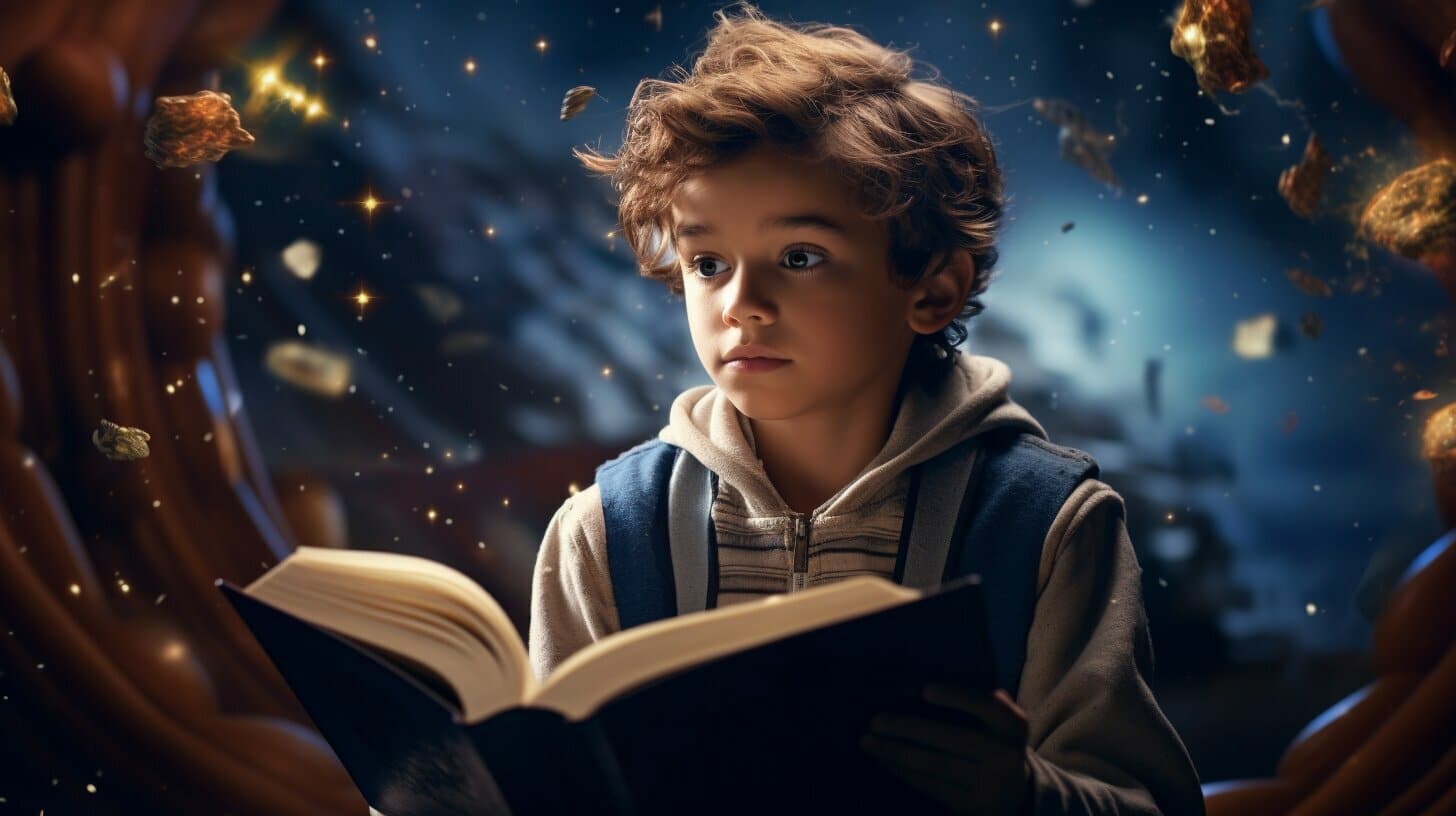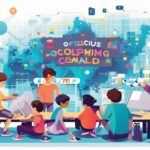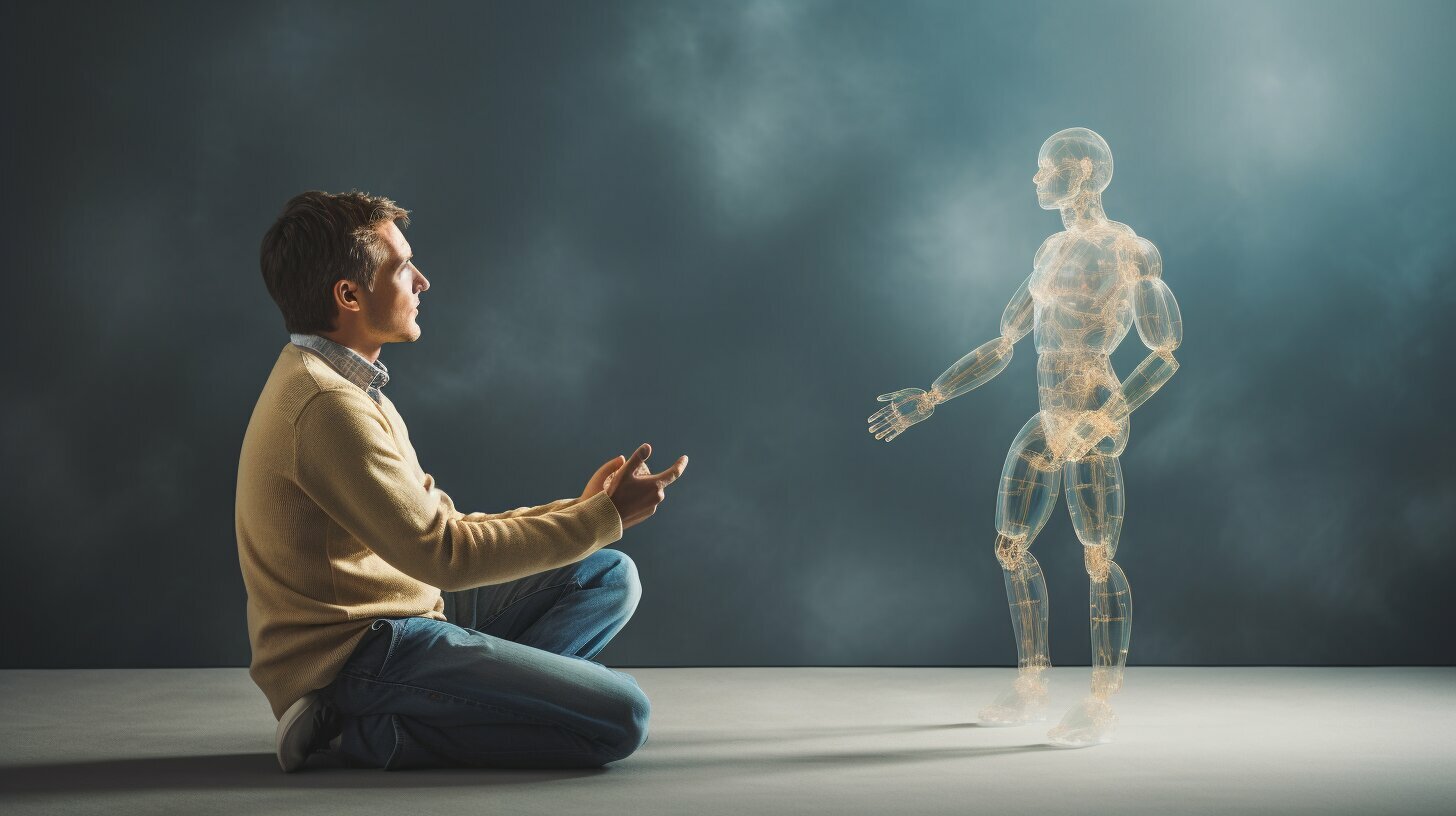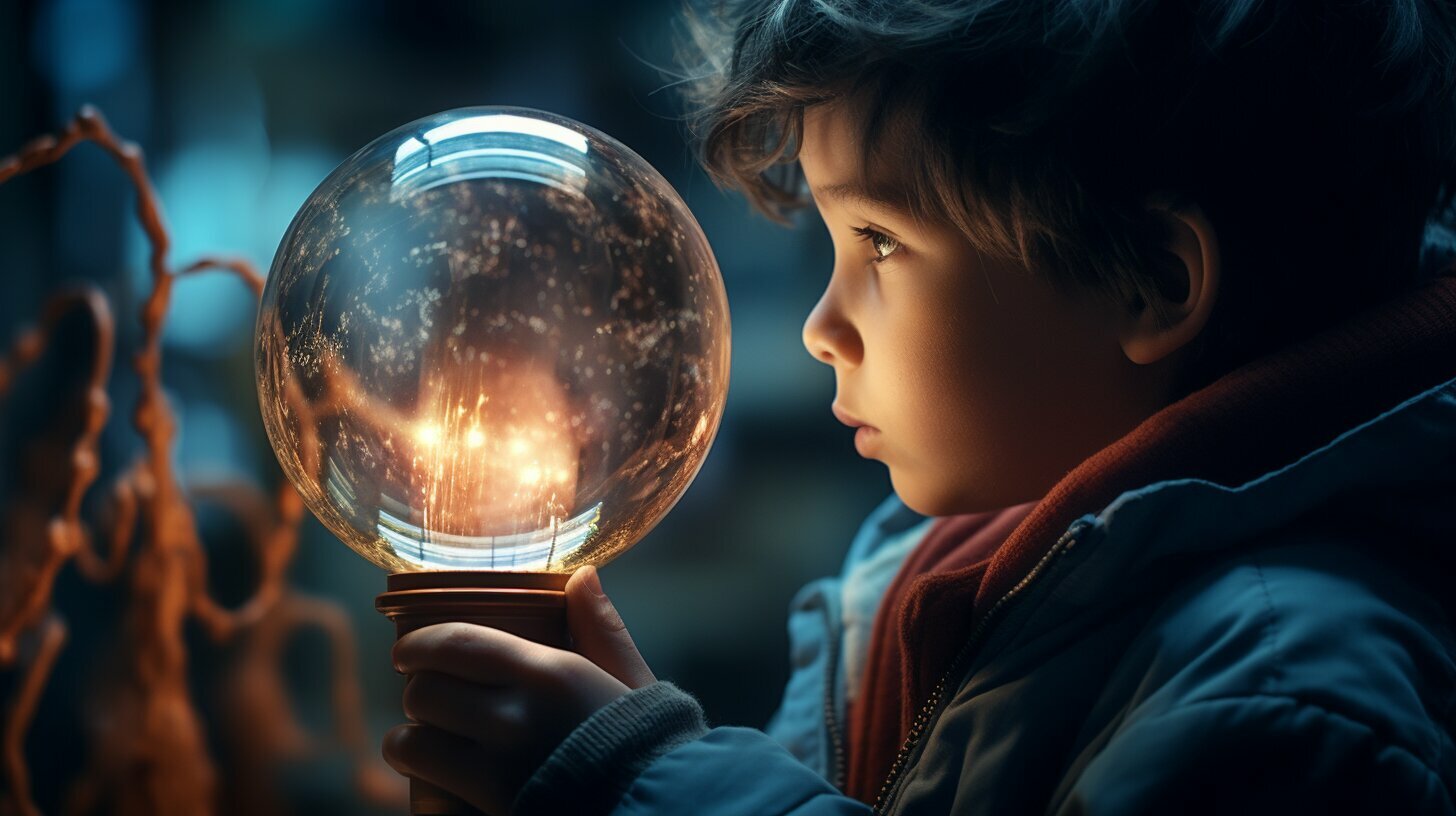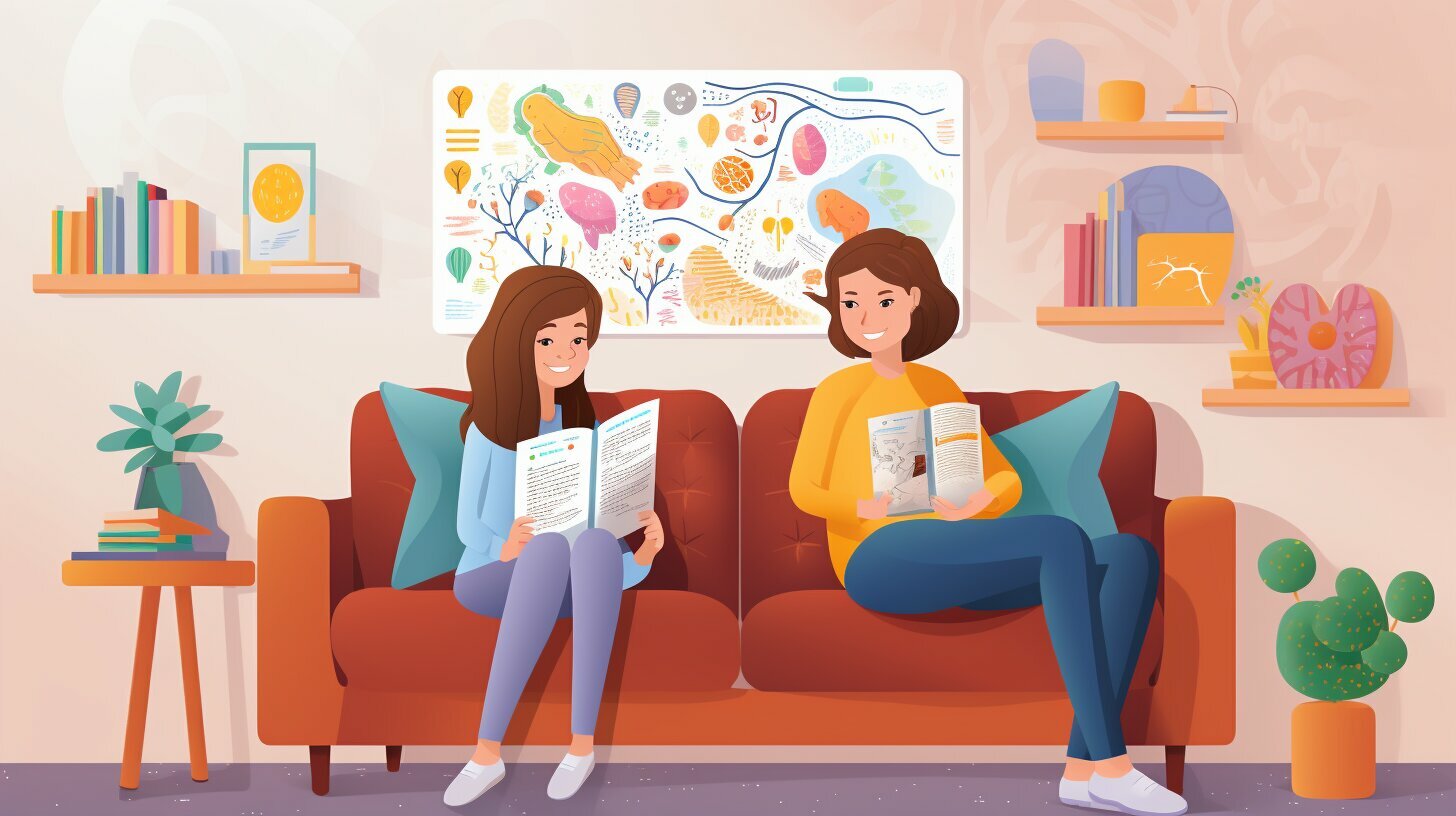Have you ever tried explaining physics to a child? It can be a daunting task, especially when it comes to complex theories like the theory of relativity. However, helping children understand these concepts can spark their curiosity and interest in science, so it is worth the effort.
In this easy guide, we will break down the theory of relativity and provide you with tips and tricks to explain it to children. From exploring Einstein’s thought experiments to real-life examples, we will cover everything you need to know to make relativity understandable and fun for kids.
Key takeaways:
- Explaining physics to a child can be challenging, but it can ignite their interest in science.
- Our easy guide will help you break down the theory of relativity for children.
- We will explore thought experiments, provide real-life examples, and suggest fun activities to make the theory understandable and enjoyable for kids.
What is the Theory of Relativity?
Albert Einstein’s theory of relativity is a concept that explains how space and time are intertwined and how gravity affects these two fundamental aspects of our universe. In simpler terms, it tells us that time and space are not fixed but are relative to the observer. This may sound a bit confusing, but we’ll break down the concepts in an easy-to-understand manner.
The theory of relativity consists of two major parts: special relativity and general relativity. Special relativity deals with the laws of physics in the absence of gravity, while general relativity includes the effects of gravity on space and time. Both parts of the theory have been tested and verified with numerous experiments and observations over the years.
One of the key ideas behind the theory of relativity is that the speed of light is constant, which means that it does not change regardless of the motion of the observer or the light source. This principle fundamentally changes our understanding of space and time and has led to many groundbreaking discoveries in physics.
So, in short, the theory of relativity explains how space and time work together, how gravity affects them, and how the speed of light is a constant that shapes the fabric of our universe.
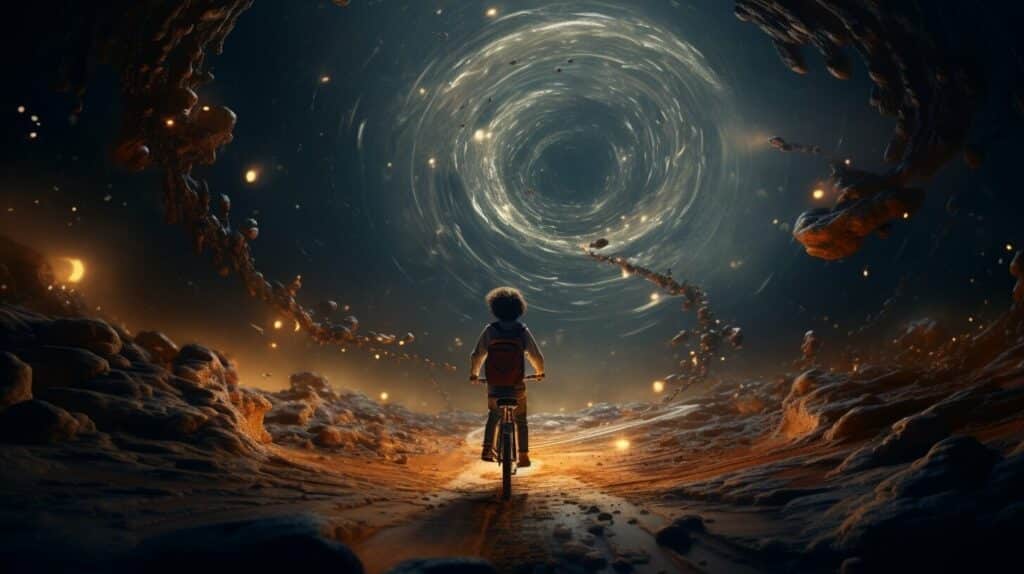
Why is the Theory of Relativity Important?
The theory of relativity is a fascinating and complex concept that has had a profound impact on our understanding of the universe. While it may seem like a difficult subject to teach to children, breaking down the key concepts can make it easier for young minds to comprehend.
Understanding the theory of relativity can help children develop critical thinking skills and expand their knowledge of the world around them. It can also inspire a curiosity about science and lead to a lifelong appreciation of learning.
But beyond its educational benefits, the theory of relativity has also had practical implications. It has played a crucial role in the development of modern technology, including GPS systems, particle accelerators, and nuclear power plants.
Moreover, the theory of relativity has challenged long-held beliefs in physics, paving the way for new discoveries and furthering our understanding of the universe. By teaching children about the theory of relativity, we can help foster a new generation of scientists and researchers who will continue to push the boundaries of human knowledge.
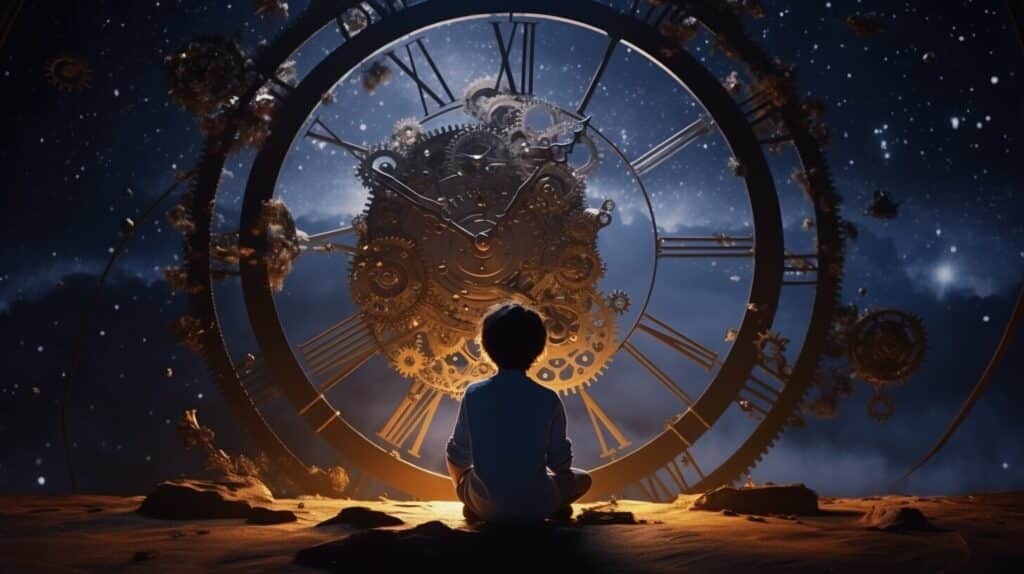
Image source: https://seowriting.ai/32_6.png
Time and Space: Einstein’s Big Ideas
One of the most fundamental concepts in the theory of relativity is the relationship between time and space. According to Einstein’s theory, time and space are not separate and distinct concepts, but rather two aspects of a single entity known as space-time.
Space-time is a four-dimensional structure that encompasses the three dimensions of space and the one dimension of time. This means that objects in motion experience time differently than objects at rest, and that the faster an object moves through space, the slower it experiences time.
This may sound like a difficult idea to grasp, but think of it like this: imagine that you are standing still while a friend runs past you. From your perspective, your friend is moving quickly through both time and space. But from your friend’s perspective, time seems to slow down as they move faster through space. This effect is known as time dilation and is a key component of the theory of relativity.

Another important idea in the theory of relativity is the concept of space curvature. According to Einstein’s theory, the presence of large objects such as planets causes space to curve. This curvature can cause objects to move differently than they would in flat, straight space, leading to phenomena such as gravitational lensing and the bending of starlight around massive objects.
To illustrate this concept, imagine a ball placed on a trampoline. The ball represents a large object such as a planet, and the trampoline represents space-time. When the ball is placed on the trampoline, it causes a curvature in the fabric of the trampoline. This curvature can cause smaller objects, such as marbles, to move in curved paths around the ball, just as planets orbit around a star.
By understanding these concepts of time dilation and space curvature, children can begin to grasp the fascinating and mind-bending ideas of the theory of relativity.
Light and Gravity: Key Forces in the Theory of Relativity
Light and gravity are two fundamental forces that play a crucial role in Einstein’s theory of relativity. Let’s take a closer look at how these forces are interconnected and how they help us understand the theory.
Firstly, light travels at a constant speed, regardless of the motion of the observer. This means that the speed of light is always the same, no matter how fast you are moving or in what direction. This is a fundamental principle of the theory of relativity, known as the constancy of the speed of light.
Secondly, gravity is the force that causes objects to accelerate towards each other. In other words, it is what makes objects fall towards the Earth’s surface. In the theory of relativity, gravity is not seen as a force but as a curvature of spacetime. This means that objects are not actually pulled towards each other by a force but rather follow the curvature of spacetime created by the presence of massive objects.
This idea of gravity being a curvature of spacetime was famously illustrated by the thought experiment of a ball placed on a trampoline. The ball represents a massive object and the trampoline represents spacetime. The weight of the ball causes a curvature in the trampoline, and any smaller objects placed on the trampoline will follow the curvature towards the ball, simulating the effect of gravity.
Finally, the theory of relativity explains how light is affected by gravity. According to the theory, gravity affects the path of light, causing it to bend around massive objects. This effect was famously confirmed during a solar eclipse in 1919 when the position of stars was found to have shifted slightly due to the bending of light around the sun.
Understanding the role of light and gravity in the theory of relativity is crucial to grasping the significance of the theory and its impact on modern physics. Keep reading to learn more about exploring Einstein’s thought experiments and real-life examples that help children understand the theory of relativity.
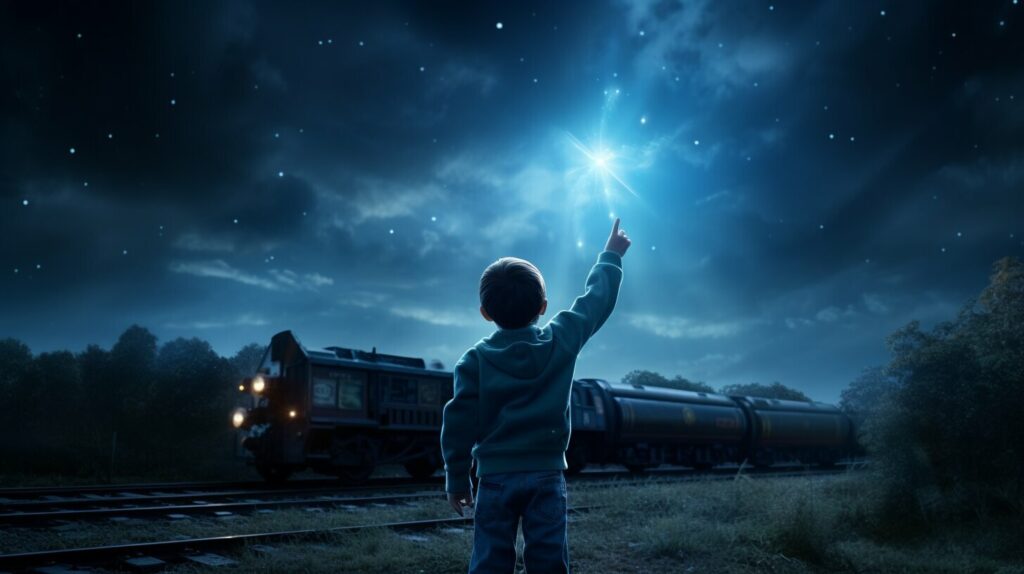
Exploring Einstein’s Thought Experiments
Albert Einstein was known for his thought experiments that helped him illustrate complex physics concepts in a way that anyone could understand. Exploring these thought experiments can be a great way to help your child understand the theory of relativity.
One of Einstein’s most famous thought experiments is the “Twin Paradox.” In this scenario, one twin stays on Earth while the other travels through space at a high speed. When the traveling twin returns to Earth, they have aged less than the twin who stayed on Earth. This illustrates the concept of time dilation and how time can pass differently depending on your position and movement in space.
| Einstein’s Twin Paradox | 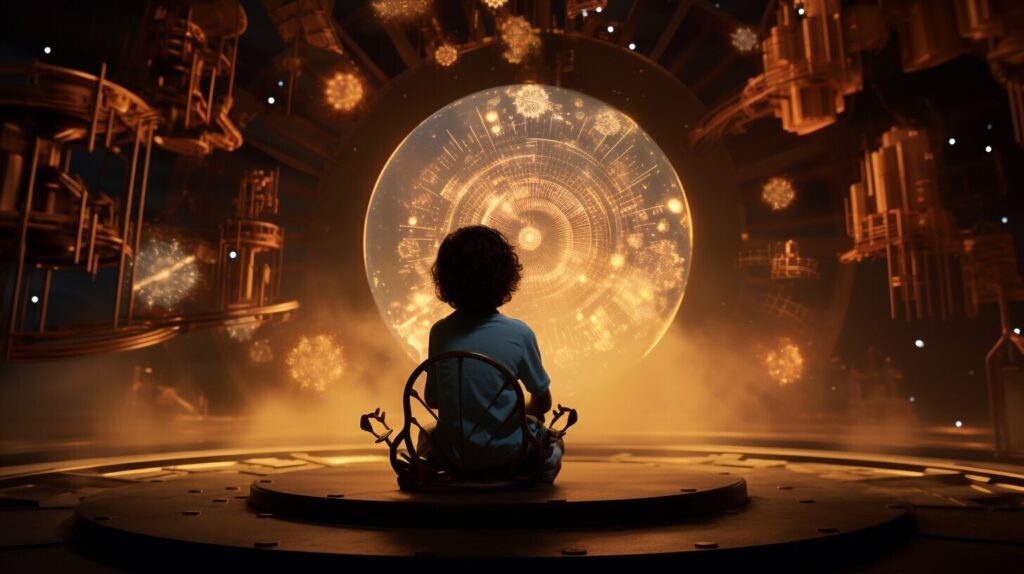 |
|---|
Another thought experiment that Einstein used to demonstrate the theory of relativity is the “Elevator Experiment.” In this experiment, a person in a falling elevator would feel weightless, as if they were in space. This illustrates the equivalence principle, which states that the effects of gravity and acceleration are indistinguishable.
By exploring these thought experiments with your child, you can help them visualize and understand the principles of the theory of relativity in a fun and engaging way.
Real-Life Examples to Illustrate the Theory of Relativity
To help children visualize and better understand the theory of relativity, here are some real-life examples:
- The faster you travel, the slower time moves. This means that if you were to go on a rocket ship and travel close to the speed of light, time would actually slow down for you compared to someone who is not moving as fast. This is called time dilation.
- The closer you are to a massive object, the slower time moves. This is because gravity affects time. If you were to stand at the base of a mountain, time would be slightly slower for you because you are closer to the earth’s center of gravity.
- Light always travels at the same speed. This means that no matter how fast you are moving, light will always appear to be moving at the same speed. For example, if you were in a car traveling at 50 mph and shone a flashlight in front of you, the light from the flashlight would still move at 186,000 miles per second, even though you are moving at a much slower speed.
- The mass of an object affects time and space. This is because mass affects gravity, which in turn affects time and space. For example, the sun’s massive size affects the space around it, causing planets to orbit around it.
These examples may seem strange at first, but they are all part of the theory of relativity and help explain how the universe works. By understanding these concepts, children can gain a deeper appreciation for the world around them.

Answering Common Questions about the Theory of Relativity
If your child is curious about the theory of relativity, they may have some questions about the concepts discussed in this article. Here are some common questions and their answers:
- What is time dilation?
- How does the speed of light play a role in relativity?
- What is the relationship between mass and energy in relativity?
- Why is the theory of relativity important?
- Can the theory of relativity be proven?
Time dilation is the idea that time passes differently depending on relative motion and gravity. It means that time will move slower for an object in motion or under the influence of strong gravity. This has been proven by experiments with atomic clocks in space and on Earth.
The speed of light is a constant in the universe, and according to Einstein’s theory of relativity, it is the maximum speed at which information can move. This means that nothing can travel faster than the speed of light. The theory also suggests that time and space are interconnected and can change based on relative motion.
Einstein’s famous equation, E=mc², shows the relationship between mass and energy. It means that energy and mass are interchangeable, and that a small amount of mass can be converted into a large amount of energy. This is the principle behind nuclear energy.
The theory of relativity has had a profound impact on our understanding of the universe and has led to many technological advancements, such as GPS. It has also challenged our preconceptions of time and space and expanded our imagination about the possibilities of the universe.
The theory of relativity has been extensively tested through experiments and observations, and so far, it has held up to scrutiny. However, it is always possible that new evidence or theories could emerge that may challenge or refine our understanding of relativity.
Hopefully, these answers will help your child better understand and appreciate the fascinating world of the theory of relativity!
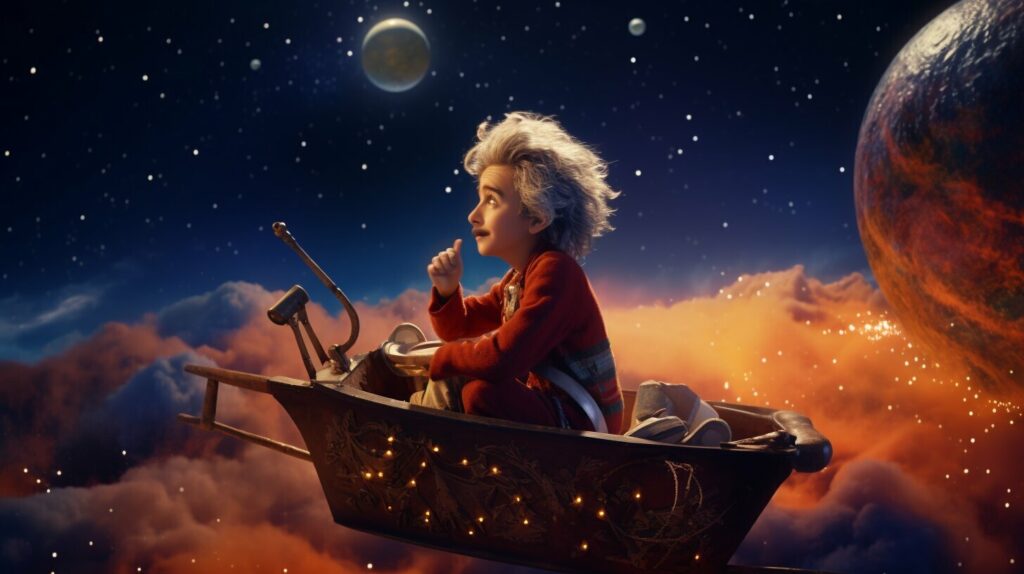
Fun Activities to Explore the Theory of Relativity
Learning about the theory of relativity can be fun and exciting for children! Here are some engaging activities to help them explore and understand Einstein’s famous theory:
- Experiment with Time Dilation: Have your child stand at one end of a room and count to 100 while walking towards the other end of the room. Time how long it takes them to reach the other end. Then, have them run back to the starting point and repeat the process, this time running at full speed. Compare the time it took for both walks and runs. This will help your child understand the concept of time dilation and how time can be affected by speed.
- Create a Gravity Well: Using a large piece of fabric or a bedsheet, place a heavy object in the center of the fabric and pull the fabric up around it to create a “well.” Roll a small ball around the outside of the “well” and observe how it orbits around the heavy object, just like planets orbit around the sun due to its gravity. This will help your child understand how gravity affects the motion of objects.
- Light Bending Experiment: Fill a tall glass with water and place a pencil in it. Observe how the pencil appears to bend at the water’s surface. This demonstrates how light can be bent or refracted by gravity, similar to what happens during a solar eclipse.
Encourage your child to ask questions and be curious about the theory of relativity. These activities can help them develop a deeper understanding of the principles behind Einstein’s groundbreaking work.
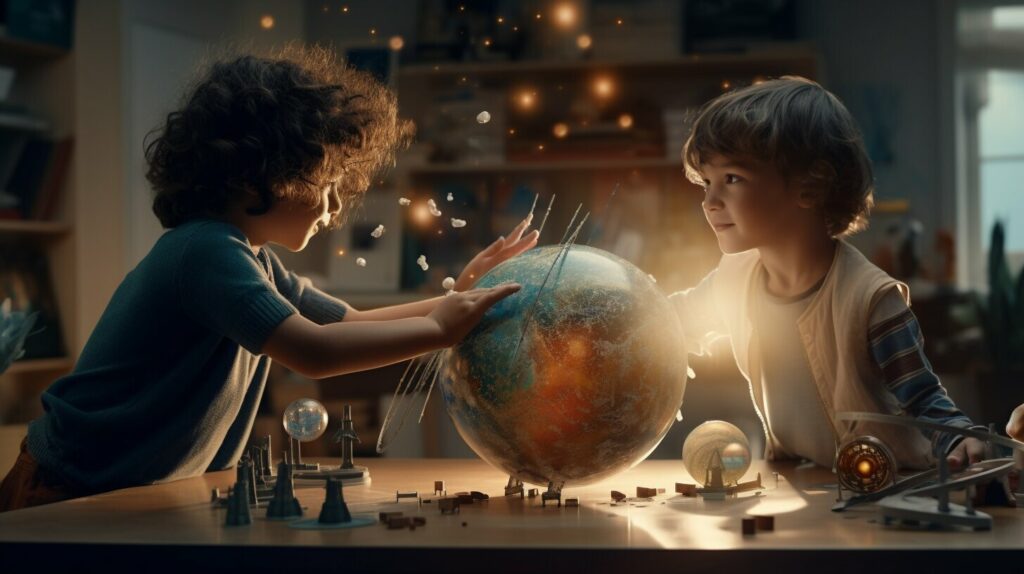
Conclusion
Congratulations! You have now completed your easy guide on how to explain the theory of relativity to a child. By breaking down complex physics concepts and using relatable examples, you have given young minds the opportunity to understand and appreciate Einstein’s theory.
Remember, teaching the theory of relativity to kids is important because it helps them develop critical thinking skills and encourages them to tackle challenging concepts. By providing real-life examples and engaging activities, you can further enrich their understanding of this fascinating theory.
So go ahead and share your newfound knowledge with the children in your life. Who knows, maybe you’ll inspire the next Einstein!
Can You Simplify Superstring Theory for a Child Like You Did with Theory of Relativity?
Can You Simplify Superstring Theory for a Child Like You Did with Theory of Relativity? Introducing a simplified guide to superstring theory: This theory aims to unify all forces and explain the fundamental nature of reality using tiny vibrating strings. While the Theory of Relativity deals with gravity and motion, superstring theory delves into the tiniest building blocks of matter. Although complex, it can be understood with patience and an open mind.
FAQ
Q: How do I explain the theory of relativity to a child?
A: Explaining the theory of relativity to a child can be made easier by breaking down complex concepts into simple terms that they can grasp. Using real-life examples and analogies can help them visualize and understand the theory better.
Q: What is the theory of relativity?
A: The theory of relativity, proposed by Albert Einstein, is a scientific theory that explains how time and space are interconnected. It introduces the concept that time and space are not absolute, but can be affected by factors such as gravity and the speed of light.
Q: Why is the theory of relativity important?
A: Understanding the theory of relativity is important because it revolutionized our understanding of how the universe works. It allows us to comprehend complex physics concepts and explains phenomena that were previously unexplained.
Q: What are the key ideas of the theory of relativity?
A: The theory of relativity revolves around the concepts of time and space. It explains how time can be affected by the speed an object is moving or the gravitational pull it experiences. It also introduces the idea that the speed of light is constant and is the maximum possible speed in the universe.
Q: What role do light and gravity play in the theory of relativity?
A: Light and gravity are key forces in the theory of relativity. The theory explains how gravity can bend the path of light, causing it to appear curved. It also demonstrates that the speed of light is constant in all reference frames, regardless of the motion of the source or observer.
Q: What are some famous thought experiments conducted by Einstein to illustrate the theory of relativity?
A: Einstein conducted several thought experiments to illustrate the principles of the theory of relativity. One famous example is the “twin paradox,” which explores the effects of time dilation when one twin travels at high speeds while the other remains on Earth.
Q: Can you provide real-life examples to illustrate the theory of relativity?
A: Sure! One example is GPS satellites. The precise timekeeping required for accurate GPS navigation takes into account the effects of relativity, as the satellites are moving at high speeds and experience weaker gravity compared to the Earth’s surface.
Q: What are some common questions children have about the theory of relativity?
A: Children may wonder how time can change or how something can be both a wave and a particle. They may also question why gravity affects light or how the speed of light is constant for all observers. These questions can be addressed in simple and clear terms.
Q: What fun activities can children do to explore the theory of relativity?
A: Engaging activities such as creating homemade experiments to demonstrate time dilation or building model spaceships to understand the effects of gravity can help children explore and understand the theory of relativity in a fun way.

